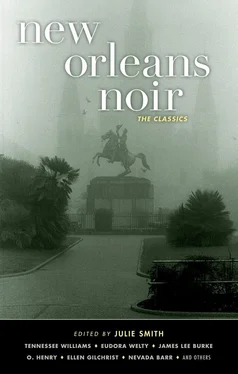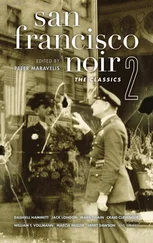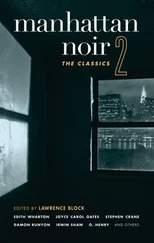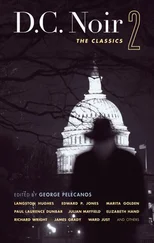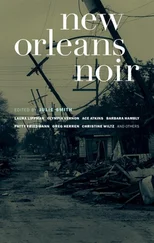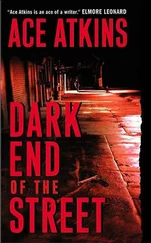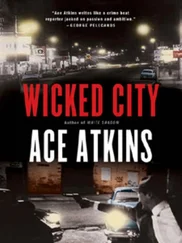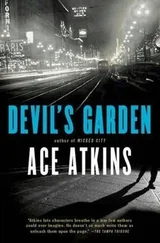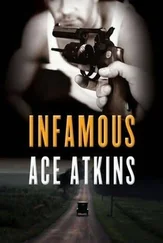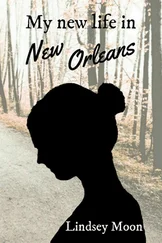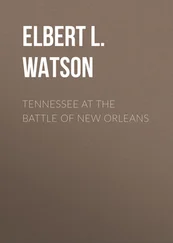Ace Atkins - New Orleans Noir - The Classics
Здесь есть возможность читать онлайн «Ace Atkins - New Orleans Noir - The Classics» весь текст электронной книги совершенно бесплатно (целиком полную версию без сокращений). В некоторых случаях можно слушать аудио, скачать через торрент в формате fb2 и присутствует краткое содержание. Город: New York, Год выпуска: 2016, ISBN: 2016, Издательство: Akashic Books, Жанр: Детектив, на английском языке. Описание произведения, (предисловие) а так же отзывы посетителей доступны на портале библиотеки ЛибКат.
- Название:New Orleans Noir: The Classics
- Автор:
- Издательство:Akashic Books
- Жанр:
- Год:2016
- Город:New York
- ISBN:978-1-61775-384-8
- Рейтинг книги:3 / 5. Голосов: 1
-
Избранное:Добавить в избранное
- Отзывы:
-
Ваша оценка:
- 60
- 1
- 2
- 3
- 4
- 5
New Orleans Noir: The Classics: краткое содержание, описание и аннотация
Предлагаем к чтению аннотацию, описание, краткое содержание или предисловие (зависит от того, что написал сам автор книги «New Orleans Noir: The Classics»). Если вы не нашли необходимую информацию о книге — напишите в комментариях, мы постараемся отыскать её.
takes a literary tour through some of the darkest writing in New Orleans history.
New Orleans Noir: The Classics — читать онлайн бесплатно полную книгу (весь текст) целиком
Ниже представлен текст книги, разбитый по страницам. Система сохранения места последней прочитанной страницы, позволяет с удобством читать онлайн бесплатно книгу «New Orleans Noir: The Classics», без необходимости каждый раз заново искать на чём Вы остановились. Поставьте закладку, и сможете в любой момент перейти на страницу, на которой закончили чтение.
Интервал:
Закладка:
“You’re up to your ass in murders already, boy,” Snowood said. “This ain’t nothin’ but paperwork.” Tilting his Stetson back, Snowood pointed to the body with his notepad and added, “Anyway, it looks like a good shootin’.”
The body was on its side, legs straight out, arms contorted like soft pretzels. There were holes in the soles of both shoes and a worn spot on the man’s jeans above the left knee. A stain of dark blood had gathered beneath the twisted torso. A small-caliber, blue-steel semiautomatic lay two feet from the man’s head. It was a typical Saturday night special.
“You can handle the canvass for me, if you’ve a hankerin’.”
“Sure,” LaStanza said as he leaned over the body.
It was a white male, midtwenties, about five feet eight inches tall, one hundred and eighty pounds, with frizzy brown hair and a large gunshot wound in the center of his chest. Stepping out of the way of the technician, LaStanza paused and looked back at the body. There was something familiar about it. That was when he saw the hands.
He found some empty soft drink cases a few feet away and sat on them as his partner and the technician began taking measurements. Tugging angrily on his mustache, LaStanza stared at the pallid hands, at the limp fingers that looked like white goldfish left out to rot, and remembered...
LaStanza had been riding alone that night when the call came out.
“Headquarters — any Sixth District unit. Signal 103M with a gun. 2300 block of Rousseau.”
A disturbance on Rousseau Street involving a mental case with a gun. There was only one appropriate thought: Fuck me!
It was a typically busy night in the bloody Sixth District. LaStanza was the only one available. He flipped on his blue lights, accelerated, and made it to Rousseau in less than two minutes. He found a small gathering in the 2300 block, about a dozen people standing in the street in front of an alley between a large warehouse and a junkyard. He was surprised to see a white face in the crowd.
As he climbed out, the white face approached and pointed to the alley and said, “My son’s in there with a.25 automatic. He’s a mental patient.” The man was tall and very thin and wore thick spectacles.
“What’s his problem?” LaStanza asked the spectacles.
“He’s crazy.”
“Who gave him the gun?”
“I did. I mean it’s mine.”
Crazy? It ran in the family. Now it was LaStanza’s problem. There was a loony-tune in an alley with a gun. LaStanza withdrew his stainless steel .357 Smith & Wesson and approached the alley. He could see the young man clearly, standing under a light near the side door of the warehouse.
The man paid no attention to LaStanza moving into the alley. Looking up at the sky, the loony-tune ran his left hand through his frizzy hair. In his right hand he held a small, blue-steel automatic. He looked to be in his early twenties.
When he finally noticed LaStanza, he craned his neck forward and grinned. His large, bulbous eyes batted frantically at the approaching patrolman. He slowly raised the automatic and pointed it toward LaStanza, who ducked into the shadows.
The man went, “Zap. Zap.” He followed this with a frightened laugh. His hand was shaking so hard, LaStanza thought the gun would fall.
The .357 magnum was cocked and pointed center on the man’s chest.
“Put it down,” LaStanza told the man as calmly as he could, “or I’ll blow your brains out the back of your head.” LaStanza’s hands were steady, his voice flat and dry.
The man laughed again as his gun slowly inched forward until he let it drop to the ground. Then he raised his hands and said, “You see these hands?” The man glared at the huge white digits at the end of his palms. “They’re not my hands. They’re moon hands!”
LaStanza moved forward, stepped on the automatic, holstered his magnum, and slapped a handcuff across the loony’s right wrist.
“These aren’t my hands,” the man complained as he tried to put his free hand in front of LaStanza’s eyes. With a quick jerk, LaStanza twisted the man around and cuffed both hands behind his back before picking up the automatic.
“They’re moon hands!” the man cried.
On the way to Charity Hospital, the man told LaStanza he was a second-generation clone. Then he started pleading for LaStanza to take him to Tchoupitoulas and Jackson Avenue, to catch his flight — to Alpha Six.
“This one needs a ride,” LaStanza told the standard-issue, heavyset, flat-faced admitting nurse. “Put him on the nonstop to Mandeville.” It was nuthouse time, absolutely.
“Must be a full moon tonight,” the bored nurse said. “All the loonies are out.”
While LaStanza was filling out his report, a Seventh District patrolman came in with a howling man.
“What’s his problem?” LaStanza asked.
“He thinks the world’s being taken over by clones.”
LaStanza couldn’t resist. “Put him in with mine. He’s a second-generation clone.”
The patrolman eagerly obliged. LaStanza and the other cop watched the two men standing at opposite ends of the small trauma room, hissing and spitting at one another. LaStanza laughed so hard, his side ached. He’d been on the street long enough to not pass up an opportunity like that. Laughs were hard to find along the bloody streets of the Sixth District.
The Man with Moon Hands became one of LaStanza’s favorite cop stories, especially after the man was released, as all nutcases inevitably were. The frizzy-haired loony began waiting every night at Tchoupitoulas and Jackson Avenue, for his flight — to Alpha Six. No matter the weather, he would be there, standing with his tattered brown suitcase in front of the old, abandoned New Orleans Cotton Exchange. No one bothered him. Most people probably figured he was just waiting in the wrong place for the Jackson Avenue Ferry.
One evening LaStanza watched the Man with Moon Hands for an hour and the man never moved a muscle. He stood patiently, the moon hands wrapped around the suitcase, the bulging eyes tilted upward at the dark sky, as he waited for his flight — to Alpha Six.
Then LaStanza got transferred to Homicide. Three years later, LaStanza was in a different alley.
“What’s the matter wit’ you?” Snowood yelled. “I thought you was gonna canvass!”
LaStanza climbed off the cases and started down the alley. He was still looking at the body.
“Mark and I are taking Wyatt Jr. here to the Bureau for his statement,” Snowood said. To Snowood, a cop who shot someone had to be related, no matter how distantly, to Wyatt Earp himself.
LaStanza watched as the corpse was zipped into a black body bag and hauled off by the coroner’s assistants. In the span of two minutes, he was alone. But there was nothing to canvass. It was a dead-end alley with no doors or windows, just brick walls and rusted dumpsters and bent-up garbage cans. It was a garbage alley.
It became very quiet. If he strained, LaStanza could hear cars in the distance, but it was silent in the alley. There was no movement except for the gnats circling over the fresh blood, and the rats crouching in anticipation of the moment when the detective would be gone.
On his way out of the alley, he remembered something else. He remembered yet another alley, back when he was a rookie. It was Mardi Gras morning and someone had killed a cop. LaStanza found the cop killer in a foggy alley. The man had a gun and it was over in less than a second. It was a good shooting, a clean shooting.
He’d shot the man without hesitation. And he wondered about that, about the intangible, about the unspoken reason a cop shoots one and not another. Maybe there was something in the moon man’s frantic eyes that told LaStanza not to shoot. Maybe it was the frizzy hair. Or maybe it was the moon white hands.
Читать дальшеИнтервал:
Закладка:
Похожие книги на «New Orleans Noir: The Classics»
Представляем Вашему вниманию похожие книги на «New Orleans Noir: The Classics» списком для выбора. Мы отобрали схожую по названию и смыслу литературу в надежде предоставить читателям больше вариантов отыскать новые, интересные, ещё непрочитанные произведения.
Обсуждение, отзывы о книге «New Orleans Noir: The Classics» и просто собственные мнения читателей. Оставьте ваши комментарии, напишите, что Вы думаете о произведении, его смысле или главных героях. Укажите что конкретно понравилось, а что нет, и почему Вы так считаете.
